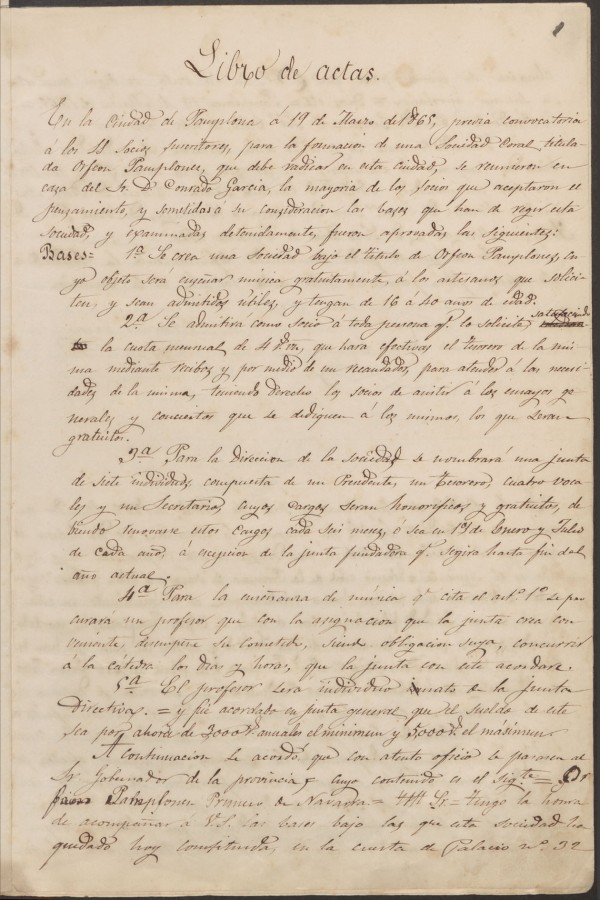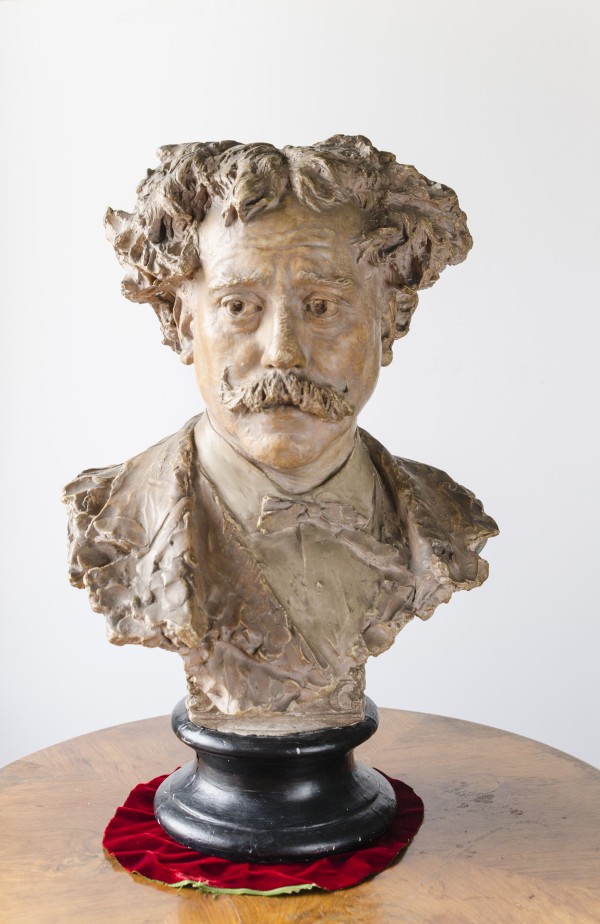Heritage
The history of the Orfeón Pamplonés is not only the history of one of Europe’s oldest choral institutions, but also that of a city and a society: Pamplona, Navarre and its population. The Society’s archives, therefore, embody a heritage of great social interest.
Archives
The Orfeón Pamplonés’ historical and musical archives contain the documents generated since 1865 and aim to encourage research to aid the development and promotion of culture.
Historical Archive
The Historical Archive currently contains more than 20,000 documents, classified into:
Press section.
Press articles from different countries containing news relevant to the Orfeón since its foundation in 1865. A section in continual expansion thanks to all the latest news about the Orfeón appearing in the press and print in general.
The archive is the fruit of a great deal of hard work put in to retrieve all the information published about the Orfeón through thorough examination and compilation of all the news items appearing in different sources in local archives and libraries.
This section is not only important as far as learning about the institution is concerned, but also when it comes to revealing other social and cultural aspects of the day.
Specialised publications, such as the one-off publications Sarasate which the Orfeón published in 1900 and 1908, also belong to this section.
Photographic section.
The oldest photographs conserved date from 1865 and the newest ones are from this year. This section also gets bigger by the day, thanks both to new photos taken as time goes by and old pictures donated to the Society.
Performance programme section.
The performance programmes of the Orfeón and other musical institutions. The oldest programme in the archive was for a performance held in 1892 in which the Orfeón sang the choral scene La Caza del Corsario. This section is of great archival importance, basically when it comes to finding out which works were performed at each different event and as witness to how tastes in music have changed over time.
Administrative and managerial section.
Minutes Ledgers. Being specifically administrative in nature, the ledgers are the most important documents kept in this section. They are classified by number, date and the kind of meeting to which each type of ledger refers. The section contains all the ledgers produced since the foundation of the Society in 1865.
Managerial documents. This section contains all the documents generated as a result of the day-to-day management of the Orfeón: regulations, correspondence, members lists, budgets, etc.
Artistic Files in chronological order. Together with the Minutes Ledgers, these are the most important documents in the archive through which to study society.
Miscellaneous section.
Objects of historical and artistic value. Diplomas, billboard posters, sculptures, trophies and commemorative objects. One of the most remarkable objects is a bust of Sarasate by Mariano Benlliure.
The archive also has a specialised library, a sound archive with recordings on vinyl, reel-to-reel tape, cassette tape and CD, and a film collection containing several films and videos of performances.
One of the most important items is the first recording which the Institution made in 1927.
Music Archive
Due to the nature of the Society, its music collection can be considered the true gem of its archives. More than 10,000 items make it one of the finest and most complete music archives of its kind. Like many of the sections in the historical archive, it too is in continual expansion.
The music archive contains works by a host of different composers, from classic figures to modern-day musicians, including more than a hundred from Navarre itself.
A broad range of contents from the days of early music to the present, covering major choral-symphonic works, lighter pieces, folk music and works specifically written for choruses.
Of particular importance are the works composed by and for the Society itself, meaning they are unique, and the more-than-400 works by Navarrese composers, making the archive a valuable source of knowledge concerning works written by local musicians.
The scores in the archive come in a wide range of formats, the first dating from the end of the 19th century, including originals handwritten by the composers themselves, handwritten copies, printing plates, facsimiles and modern editions. The archive also contains unpublished works and adaptations of existing works, making it a focal point for research into and the recovery of our Artistic and Cultural Heritage.
The collection is of inestimable value, bearing in mind not so much its worth in money terms, but its contribution to our knowledge of the history of music, culture, society and art in Navarre.
Bequests and donations
One of the purposes of the archive is to provide a place for local composers to leave their works in safekeeping so they can be made available for use, thereby making it a pioneering centre documenting Navarre’s music and musicians.
The most important collections donated include those left to the Society by the custodians of José Luis Ochoa de Olza’s legacy, the significant music collection which once belonged to Pamplona’s Nuevo Casino Principal and works written and donated by contemporary composers such as Rafael Manero Francés, Pascual Aldave, Koldo Pastor, etc.











